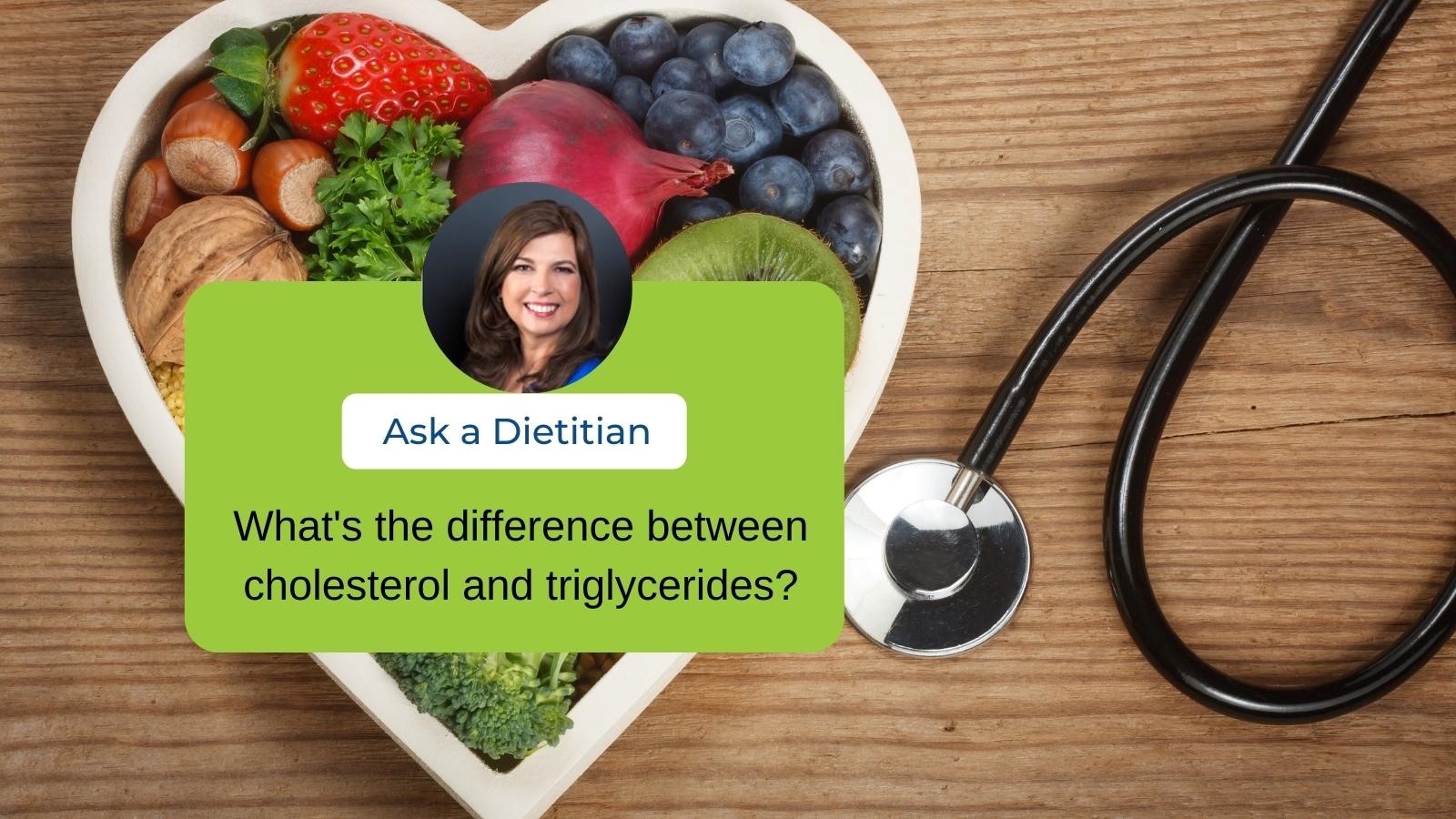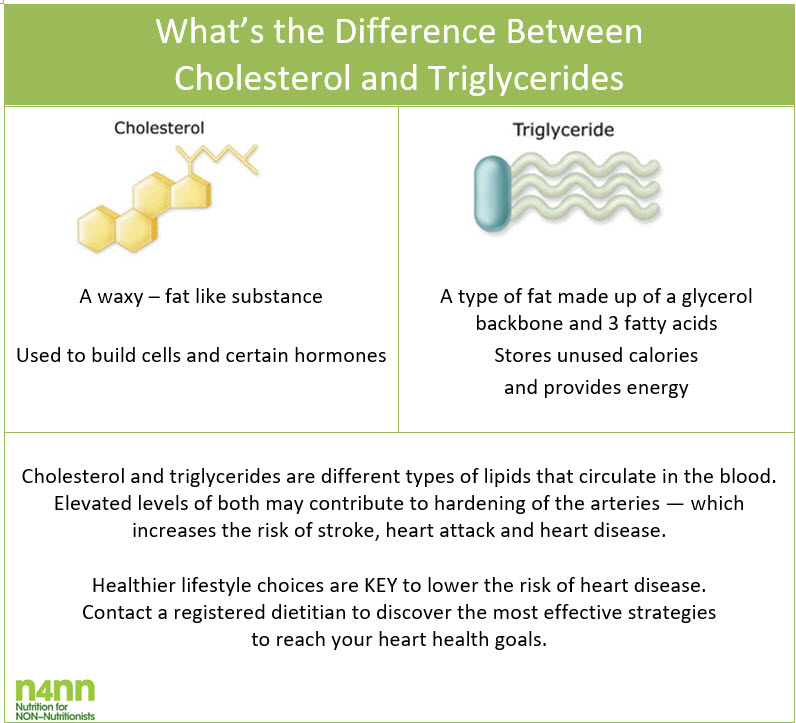
You’ve probably heard of high blood cholesterol, but have you heard of high blood triglycerides?
Cholesterol and triglycerides are important measures of heart health. Both cholesterol and triglycerides are different types of lipids that circulate in the blood, but elevated levels of both can raise your risk for heart disease. Here is a rundown of the difference between cholesterol and triglycerides, and why they matter for your heart health.
Definitions & Why it Matters
Cholesterol is a waxy, fat-like substance found in some foods and in your blood. Your liver makes most of the blood cholesterol and it produces enough for your needs. Cholesterol is part of every cell in your body and some hormones. Cholesterol is needed to help your body digest and absorb fat.
Too much cholesterol in the blood can build up inside arteries, forming what is known as plaque. Large amounts of plaque increase your chances of having a heart attack or stroke.
Triglycerides are a type of fat found in some foods as well as in your body. Triglyceride is a term that describes the structure of a fat, which is made up of 3 fatty acids and a glycerol backbone. (See summary chart for diagram). When you eat, your body converts any excess calories you don’t need to use right away into triglycerides for a longer-term energy source. Triglycerides are mostly stored in your fat cells and are commonly deposited beneath the skin and around some internal organs. Some triglycerides circulate in the blood.
You need some triglycerides for good health. But high triglycerides might raise your risk of heart disease. High blood triglycerides may contribute to hardening of the arteries or thickening of the artery walls (arteriosclerosis) — which increases the risk of stroke, heart attack and heart disease.
What’s the best way to lower your blood cholesterol and triglycerides?
Healthy lifestyle choices are KEY low lower the risk of heart disease. Bringing your blood cholesterol and triglyceride numbers down takes effort and commitment. Here are some things you can do.
Top 5 ways to lower cholesterol:
- Choose foods that are lower in saturated fats like fish, lean cuts of meat and poultry, and lower fat milk and dairy products.
- Eat a variety of heart healthy foods. Choose more vegetables, fruit, high fibre whole grains, beans, chickpeas, lentils, soy products, nuts and seeds.
- If you smoke – quit all types of smoking.
- Be physically active on most, preferable all days of the week.
- Maintain a body weight that is healthy for you.
Top 5 ways to lower triglycerides:
- Limit fast releasing carbohydrates like candy, sweet snack foods, and baked goods made with highly refined white flours.
- Limit how much alcohol you drink. Even small amounts of alcohol can raise triglycerides.
- Include heart healthy fats such as olive oil, fatty fish, nuts, seeds and avocados.
- Focus on boosting veggies and high fibre foods such as beans, lentils, chickpeas, seeds and whole grains every day.
- Enhance your fitness routine. Find moderate to vigorous activities you enjoy (such as cycling, running, brisk walking, swimming, etc.) and aim for at least 150 minutes per week which is about 40 minutes 4 times a week or 50 minutes 3 times a week.
Talk with your registered dietitian or contact us to discuss your blood lipid numbers and develop a personalized plan for keeping a healthy heart.

References:
- Duyff (2017) Academy of Nutrition and Dietetics Complete Food & Nutrition Guide
- https://www.eatrightstore.org/product-type/books/academy-of-nutrition-and-dietetics-complete-food-nutrition-guide-fifth-edition
- Health Canada (2019) Cholesterol https://www.canada.ca/en/health-canada/services/nutrients/cholesterol.html
- HealthLink BC (2020) Cholesterol and Triglycerides Tests https://www.healthlinkbc.ca/tests-treatments-medications/medical-tests/cholesterol-and-triglycerides-tests
- Miller M, et al. (2011). Triglycerides and cardiovascular disease: A scientific statement from the American Heart Association. Circulation, 123(20): 2292–2333 https://www.ahajournals.org/doi/10.1161/cir.0b013e3182160726
- University of California, San Francisco USCF (2022) Diabetes Education Online, Your Blood Lipids https://dtc.ucsf.edu/living-with-diabetes/diet-and-nutrition/understanding-fats-oils/your-blood-lipids/
Written by: Lucia Weiler, BSc, RD – Award-winning dietitian and Co-Founder, n4nn